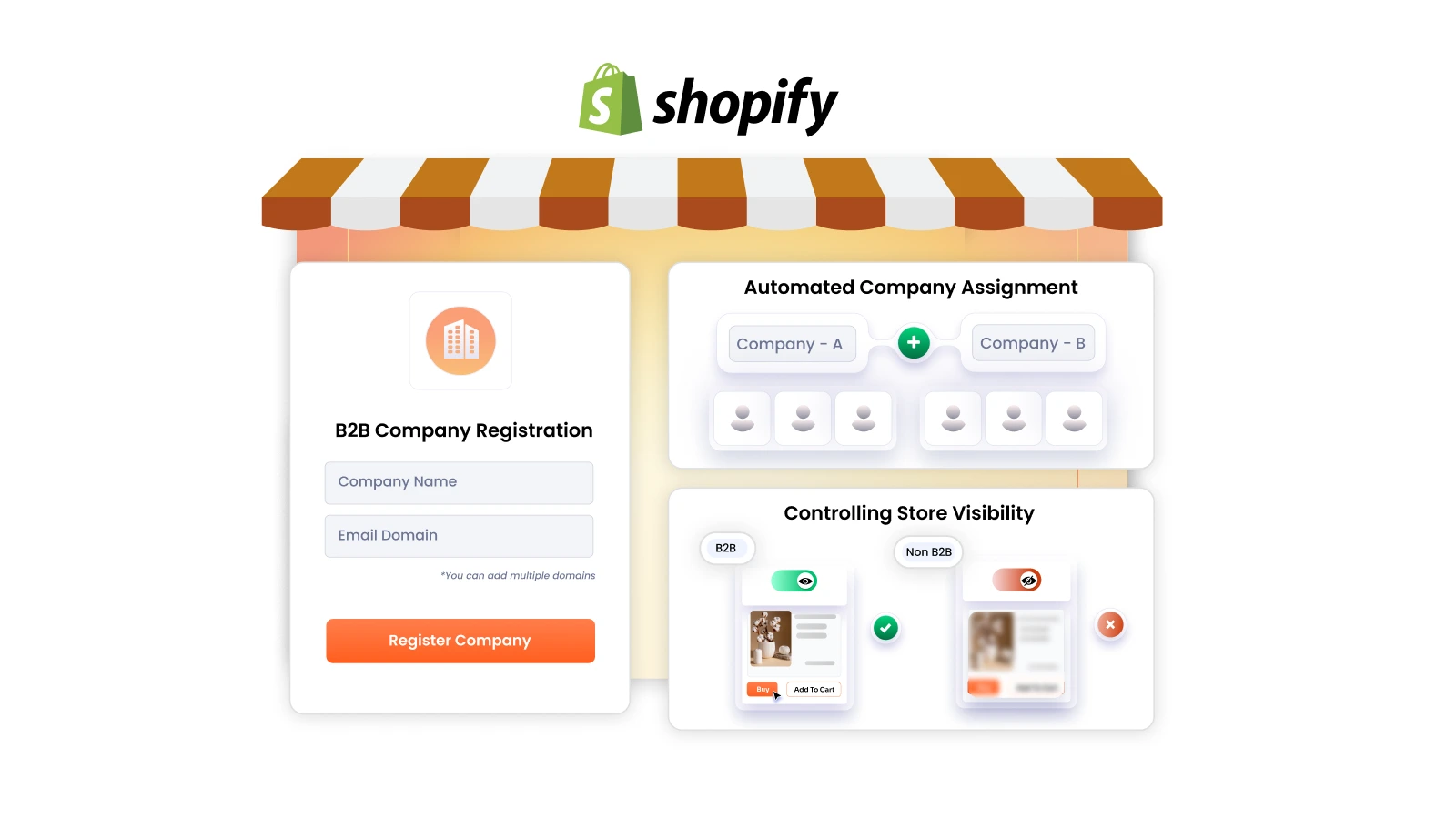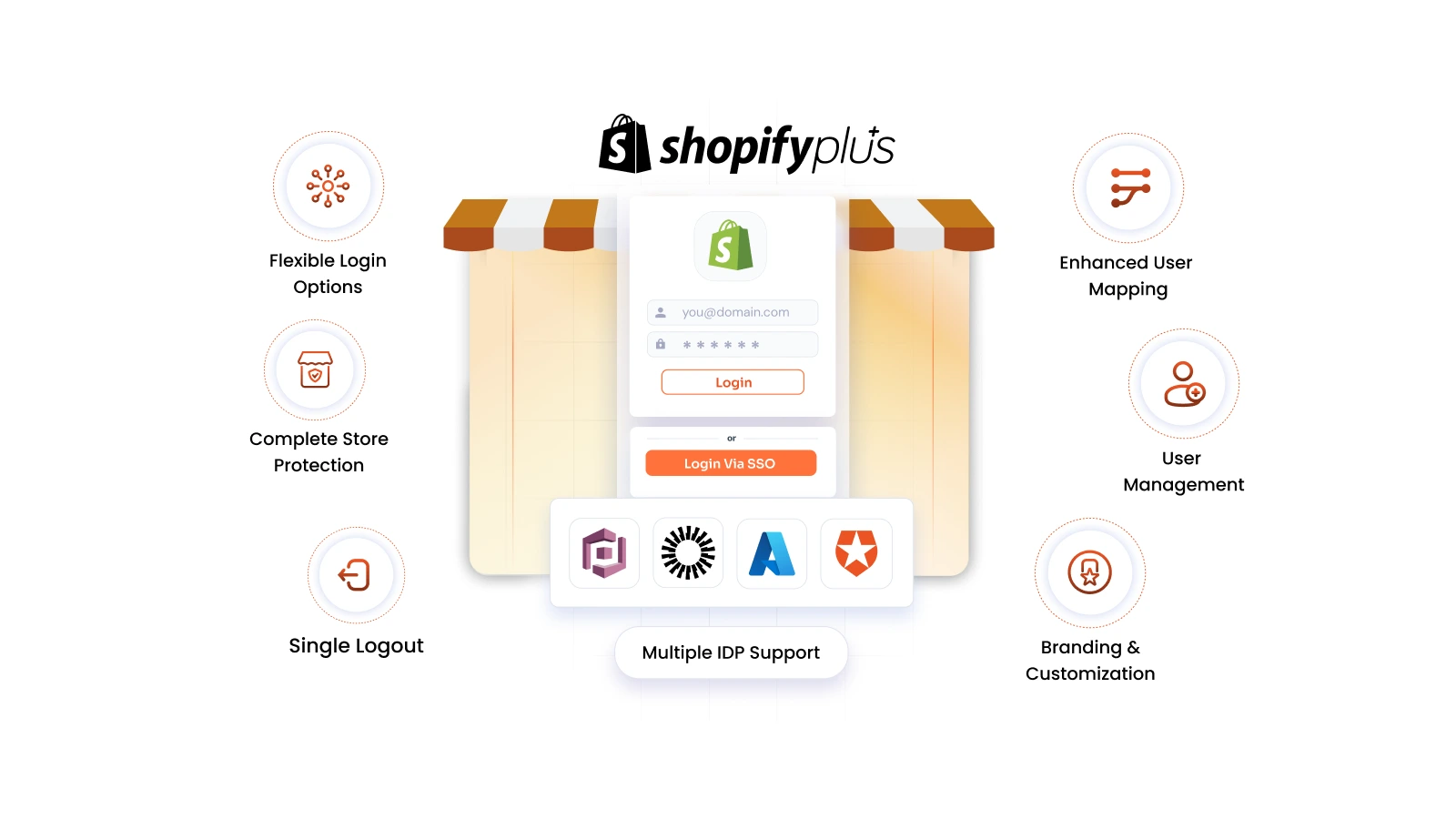How to Implement Best Practices for Secure and Reliable Shopify Login Using SSO?
Managing user access to your Shopify or Shopify Plus store becomes more complex as your business grows. Whether it’s internal employees, B2B vendors, or customers, ensuring a seamless and secure login experience is critical.
That’s where Shopify Single Sign-On (SSO) solutions can come in handy, allowing users to log in through a centralized identity provider (IDP) for smoother access control.
But to truly benefit from it, SSO must be established with the right foundation. Implementing SSO securely and reliably in Shopify requires precision, scalability, and adherence to some key steps.
In this article, we’ll explain how to implement SSO in Shopify, using five best practices that align with enterprise standards, minimize risks, and improve login consistency.
Why Shopify Single Sign-On (SSO) Matters?
Before diving into implementation, it's crucial to understand why SSO has become essential for Shopify and general e-commerce operations:
- Unifies login across storefronts and connected platforms
- Reduces password fatigue and weak credentials
- Enables centralized user control via an Identity Provider
- Improves login experience for employees, B2B buyers, and partners
- Enhances security through standardized authentication protocols
That said, poorly implemented SSO can cause more problems than it solves, from login loops to unauthorized access or session timeouts. The following best practices can help avoid these pitfalls.
Best Practices to Implement Single Sign-On (SSO) in Shopify Plus & non-Plus Stores
1. Strengthen Authentication from the Start
A secure SSO flow begins with strong authentication settings at the Identity Provider level. Enforcing multi-factor authentication (MFA), for instance, is an effective way to add an extra layer of protection.
Even though users no longer have to enter passwords directly into Shopify, MFA ensures that access isn't granted based on credentials alone. In addition, adopting passkeys or setting strong password policies within your IDP reduces the risk of compromised logins. This is critical when implementing secure and reliable SSO in Shopify environments.
Be sure to use secure, widely supported protocols like SAML, OAuth, OIDC, or JWT which are compatible with enterprise identity providers and supported by leading apps for Shopify Plus SSO implementation.
2. Configure Roles and Access Control Accurately
Once users are logged in, the next step is controlling what they can access. Attribute mapping syncs details like email domains or user groups from your IDP to Shopify, automatically applying customer tags or employee roles.
Role-based access control restricts access to admin features, dashboards, or collections based on user roles—ideal for merchants managing multiple brands or storefronts. Following the principle of least privilege ensures users only access what they need.
This structured approach is essential to create a secure and reliable SSO environment for your Shopify Plus store, especially as teams grow and access points multiply across your organization.
3. Automate User Provisioning and Management
Manual user provisioning can become unsustainable as businesses scale. With Just-in-Time (JIT) provisioning, user accounts can be created automatically when someone logs in for the first time, making it easier to manage access without IT intervention.
For larger teams, SCIM (System for Cross-domain Identity Management) can be implemented to synchronize user creation, updates, and removal across your IDP and Shopify. This is especially useful when you need to automate staff logins in Shopify or enforce consistent access policies across multiple stores.
4. Monitor, Scale, and Keep the System Healthy
SSO requires ongoing monitoring rather than a one-time setup. Regularly review login activity logs from both Shopify and your IDP to identify unusual patterns like repeated failed attempts or logins from unfamiliar IP addresses.
Consistent session handling is key to delivering seamless SSO experiences on Shopify for both employees and customers. Align session duration settings between your IDP and Shopify to prevent session expiration loops or inconsistent logouts.
These practices help implement SSO securely and reliably in Shopify and keep the system resilient against downtime or misuse.
5. Choose a Reputable SSO Provider
The long-term success of your SSO setup depends heavily on the identity provider you choose. Look for an SSO solution with a strong track record in security and scalability. It's important that the tool offers enterprise-grade capabilities and reliable support, so your authentication flow stays seamless even as your needs evolve.
A well-designed system should grow with you. As your store expands, whether by adding new employees, launching regional storefronts, or scaling your B2B operations, your SSO integration should accommodate that growth without requiring major rework.
Reputed providers like miniOrange can help you establish a robust and secure SSO solution for your Shopify Plus/non-Plus store while ensuring it remains manageable and efficient in the long run.
Conclusion
Creating a secure and reliable SSO environment for your Shopify Plus store means building an authentication flow that adapts to changing security threats and business requirements. The best practices outlined in this guide provide a foundation for enterprise-grade SSO implementation that scales with your business growth. However, the complexity of modern authentication requirements often makes partnering with experienced SSO providers the most efficient path to success. miniOrange's Shopify SSO solution incorporates these best practices into a comprehensive platform that handles everything from initial setup to ongoing access management and maintenance.
Ready to implement a secure, reliable SSO for your Shopify Plus or non-Plus store? Get in touch with us to discuss your specific requirements and get started today!




Leave a Comment